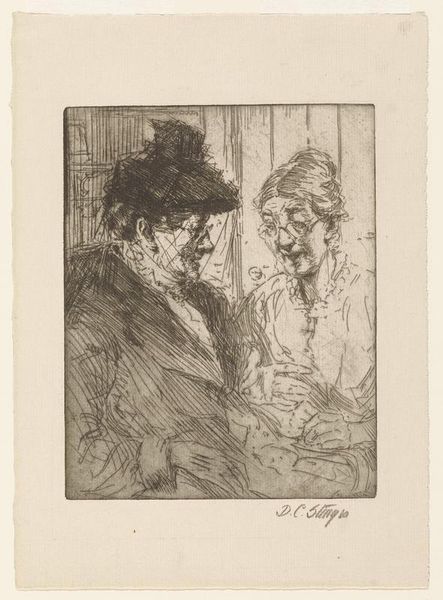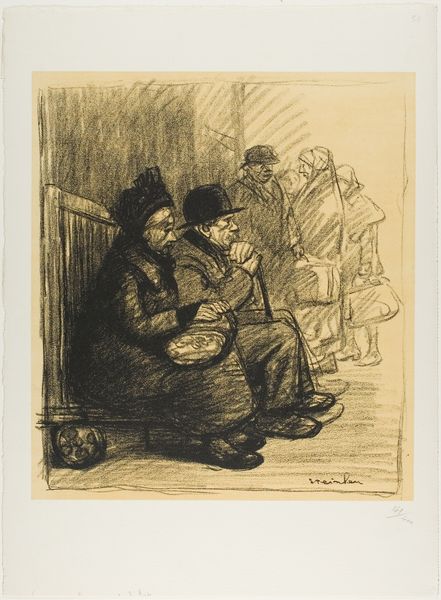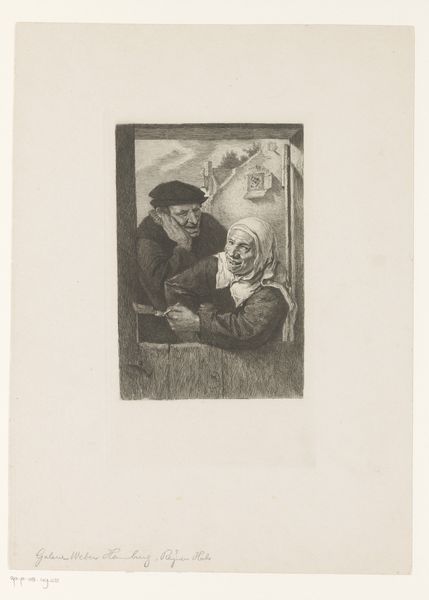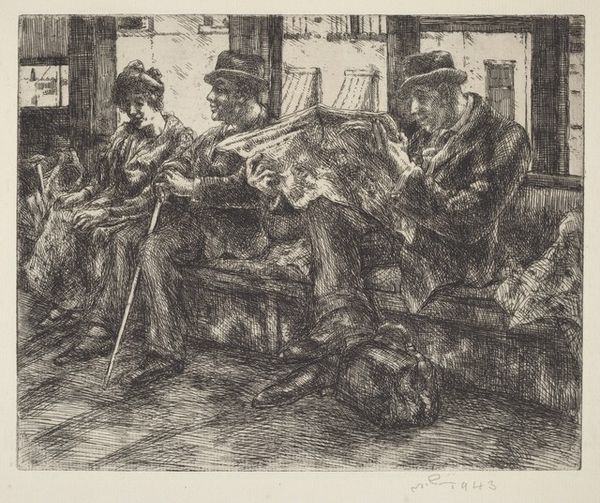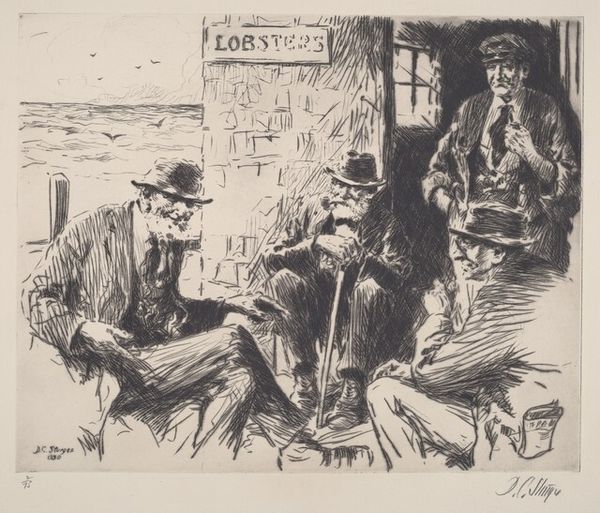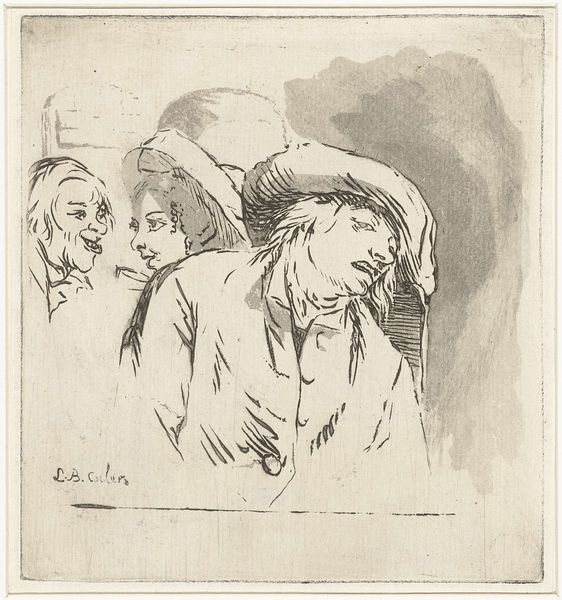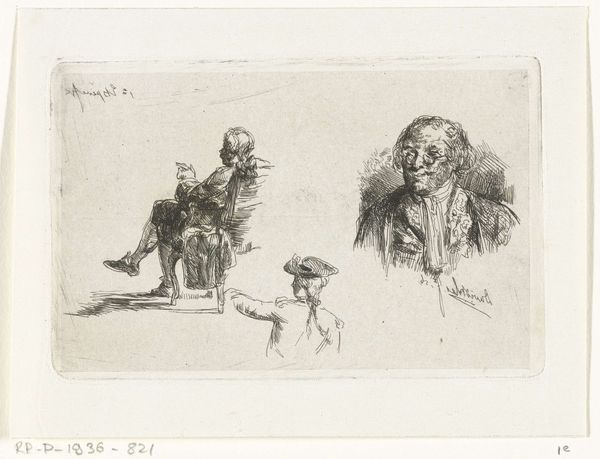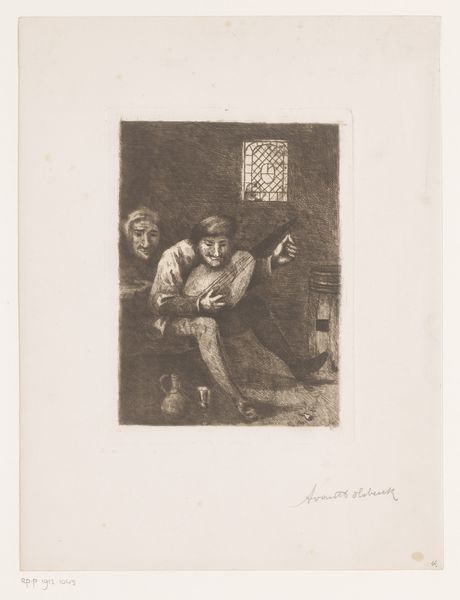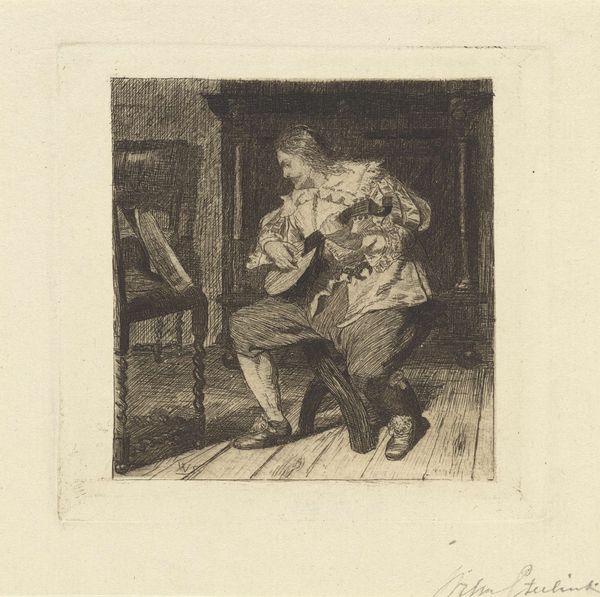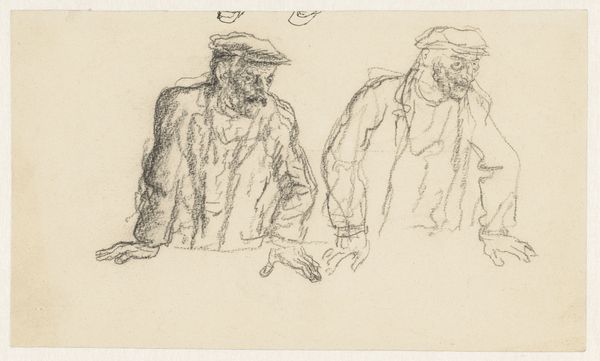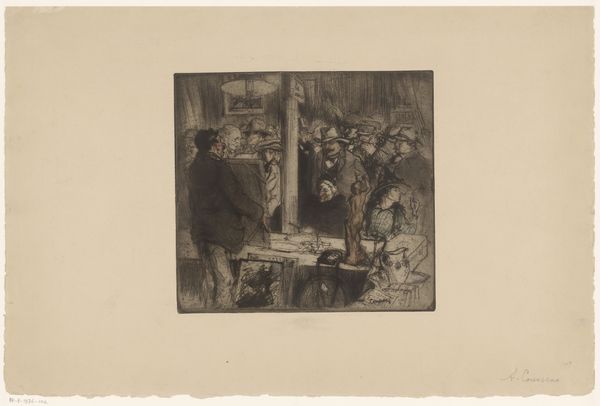
drawing, print, etching
#
portrait
#
drawing
# print
#
etching
#
figuration
Dimensions: 6 5/8 x 7 3/4 in. (16.83 x 19.69 cm) (plate)9 x 11 3/16 in. (22.86 x 28.42 cm) (sheet)
Copyright: No Copyright - United States
Curator: This etching by Dwight Case Sturges, titled "Two Men with Hats", created around 1915, captures a rather subdued scene. What’s your initial reaction? Editor: It strikes me as melancholic, almost secretive. There’s a sense of hushed intimacy implied by the overlapping figures and sombre use of tone. The hats and shadowy features suggest a concealing of identities. Curator: Yes, the materiality of etching – the way the artist physically bites into the metal plate with acid – is central to achieving this very tonal and textured effect. I wonder about Sturges's access to materials, the type of workshop he was associated with... These processes are integral to the outcome. It's the labor of it all. Editor: The figures certainly contribute to that feeling of mystery, I think the beards are significant visual markers; they denote a certain age, perhaps wisdom or weariness, as well as suggesting a closeness. They appear deep in thought or conversation. What do you make of that symbolism, given the period in which this was made? Curator: Well, etching was often seen as a more 'democratic' printmaking medium. Unlike say, a unique oil painting, it allowed for multiple impressions. Was Sturges interested in wider distribution, in producing art for the masses? This is key. We should research whether there were popular illustrated publications around the turn of the century that utilized similar means of production and subject matter. Editor: Perhaps. Their hats also offer clues. Headwear throughout history has been used as a signifier, reflecting status and affiliation, perhaps providing protection too – in both a physical and metaphorical sense. But what I find most evocative is their positioning in relation to each other; these shapes indicate dependency, collaboration or the very weight of communal history. The drawing holds that psychological potential within the print, that’s for sure. Curator: Indeed! If we consider who might consume this etching and in what context, it opens new avenues for us to explore. Etchings were collected differently than oil paintings; how did such material realities shape the cultural consumption of images in the early 20th century? Editor: This piece provides just a brief, transient glimpse into two lives in 1915, inviting consideration and appreciation of both history and visual semiotics, right? Curator: Right. It demonstrates how material processes influenced production and meaning making—illuminating larger shifts within a specific socio-economic reality, during a particular moment in art history.
Comments
No comments
Be the first to comment and join the conversation on the ultimate creative platform.
